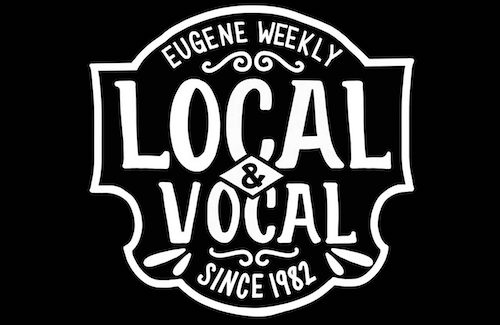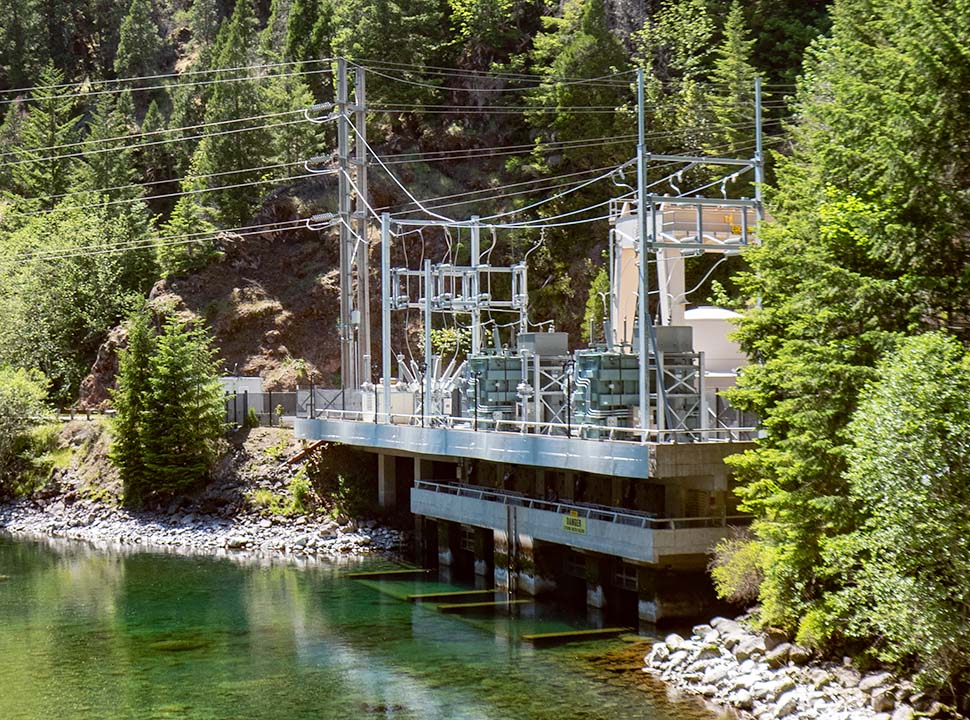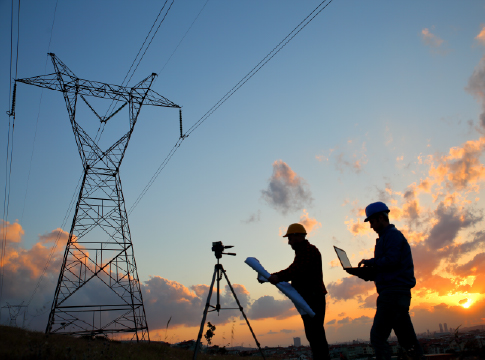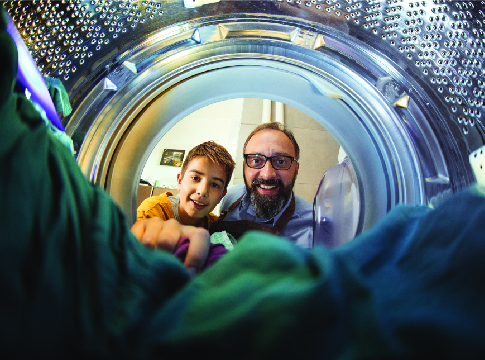Related News
Related News
-
Energy shortfall of 9 gigawatts projected for the Northwest
By 2030, a dry year combined with soaring energy demand during extended cold snaps could lead to rolling blackouts, a new study warns.
Find Out More -
Sustainability Snapshot - Celebrating Energy Efficiency Projects in the Community
Sustainability Snapshops highlight impactful projects completed by EWEB's Customer Solutions department, as a way to celebrate the meaningful work happening behind the scenes.
Find Out More -
EWEB secures $2.5 billion of reliable, affordable, carbon-free energy for customers
The new contract with EWEB’s largest energy supplier, the Bonneville Power Administration, forms the foundation of a diverse energy portfolio.
Find Out More -
Women in STEM: Meet the Hydro Project Engineer Building Habitat for Salmon
EWEB Engineer Associate Val Chang found her way to the McKenzie River from Los Angeles, inspired by heritage trips to the waters of Taiwan and key mentors along the way.
Find Out More -
Public Power Week Poster Contest Winners 2025
The results are in! View the winning posters from EWEB's 2025 Public Power Week Poster Contest.
Find Out More -
EWEB Hometown Heroes compete internationally
Out of 290 teams from 14 different countries, EWEB's Lineman Rodeo team places in the top third of competitors.
Find Out More -
Vote for your favorite Public Power Week Posters
The top five submittals will receive awards. Help us pick the winners.
Find Out More -
Electric Projects underway in North & South Eugene
Underground lines and disaster-resilient power poles are part of EWEB’s infrastructure upgrade near Eugene’s largest natural resource area.
Find Out More -
The Bonneville Power Administration Rate Change and Your EWEB Bill
BPA’s finalized rate increase is smaller than projected, and EWEB’s pass-through adjustment effective October 1, 2025 will now be 2.7% for residential customers—down from the anticipated 4%.
Find Out More -
EWEB completes helicopter installation of salmon habitat features
EWEB adds downed trees and 2,000 tons of gravel to the Uupper McKenzie River below Tamolitch Falls to improve spawning habitat.
Find Out More -
Court rules in favor of EWEB in Carmen-Smith litigation
The U.S. District Court in Eugene has granted EWEB's motion to dismiss a lawsuit brought under the Endangered Species Act pertaining to fish passage at EWEB’s Trail Bridge Dam. The favorable ruling clears the way for EWEB to continue advancing towards implementation of permanent fish passage at the dam.
Find Out More -
EWEB proposes modified plan for permanent fish passage at Trail Bridge Dam
After eight months of extensive collaboration and analysis with scientific experts at two federal regulatory agencies, EWEB is proposing an improved plan to build permanent fish passage facilities at Trail Bridge Dam on the McKenzie River.
Find Out More -
Sustainability Snapshot - Ideal Steel July 2025
Our second Sustainability Snapshop highlights a project where EWEB helped a local industrial warehouse upgrade over 1,000 flourescent lights to new efficient LEDs.
Find Out More -
EWEB prepares for wildfire season with risk mitigation measures
EWEB is building a more resilient electric system to weather various types of disasters, from wildfire to winter storms.
Find Out More -
EWEB, Lane County host open house to gather feedback for “Leaburg Transportation Alternatives Analysis”
“What is the Future of the Leaburg Dam Bridge?” open house exhibit on display at Lloyd Knox Park Visitor Pavilion through July 25
Find Out More - Show More
Eugene Weekly op-ed: Planning for a reliable, affordable, green energy future
August 04, 2023 • Frank Lawson, EWEB General Manager

This op-ed first appeared in the Eugene Weekly.
Twenty-four hours a day, 365 days a year, tomorrow, next year, next decade and next century — our work at the Eugene Water & Electric Board (EWEB) never stops, even as the environment we operate in grows increasingly dynamic.
As Oregon’s largest public utility, EWEB serves approximately 200,000 people in Eugene and parts of the McKenzie Valley. Our services — delivering drinking water and electricity — are becoming more precious and are essential to our community’s vitality.
The most immediate challenge facing EWEB is effectively planning and operating in a turbulent environment, including a changing climate, new technology, developing energy markets, political and regulatory flux, natural and human threats, and evolving diverse community opinions and expectations.
Guiding EWEB is a set of core values that reflect those we serve, including safety, reliability, affordability, environmental responsibility, equity and transparency. These values are all inclusive and perpetual, and we are responsible for navigating the tensions and tradeoffs between them.
Using our values as a guide, EWEB has spent the last 18 months forecasting Eugene’s electricity needs 20 years into the future and using modeling analysis software to assess various combinations — or portfolios — of electricity sources that would best meet those needs at the best price. This is our Integrated Resource Planning (IRP) process, which is an analysis tool used to inform near-term decisions and actions.
Recognizing that every energy resource has tradeoffs, we put some guardrails on the IRP process. We required every energy portfolio created by the model to keep rates low, always maintain electricity reliability, even during peak consumption, and be 95 percent carbon-free by 2030.
The IRP analysis results yielded several key insights. EWEB should continue to have hydropower as the foundation of our portfolio. EWEB will need to modify or develop customer programs to save energy and manage when electricity is consumed to mitigate peak demand. And, under modest growth conditions, EWEB will need to supplement our hydropower base with new intermittent renewable resources (wind farms) and new utility-scale storage (batteries).
The analytical results also showed that if demand for electricity rises more dramatically, EWEB will need zero-carbon, on-demand, “dispatchable” electricity sources. EWEB’s model identified biomass co-generation and small modular nuclear reactors as the lowest-cost options available under some conditions during the 20-year planning horizon. Other technologies may emerge in the future that offer similar capabilities, potentially with better costs, both financial and environmental. We’ll evaluate and consider them when they do.
EWEB is not alone in the need for resources with these operating characteristics. A 2022 regional study by the reliability coordinator for much of the Western U.S. indicated a need for “other emerging clean and flexible energy resource technologies that do not produce emissions” and for other “clean resource types with performance characteristics similar to that of gas-fired generation resources.”
With the modeling results published, EWEB is now moving to specific actions that we can accomplish in the next two to three years. None of the actions involve procuring new generation resources. Instead, we will launch additional studies, continue regional dialogues, monitor emerging electricity markets and technologies, and refine our decision-making framework for when we do need to acquire additional electricity resources.
EWEB will continue to negotiate a new contract with the Bonneville Power Administration, which provides about 80 percent of our energy. We will determine how much potential there is to conserve energy in the community, and how much it will cost EWEB to enhance our programs and incentivize customers to conserve more. We will assess the potential to shift electricity demand during the day to reduce peak energy use, because peak energy is more expensive to procure and typically comes with higher carbon emissions. And, lastly, we will adapt our assumptions and forecasts to prepare for our 2025 IRP — because EWEB will conduct an IRP analysis every two years to adapt to shifting conditions and better information.
The recent IRP process has informed EWEB about the issues and options based on today’s assumptions. Not everyone will be pleased with the outcomes, which reveal tradeoffs and challenges that we must overcome in the coming years. But ultimately, quantitative and qualitative information — along with our values and judgment, not the software — will determine the solutions, actions and outcomes we pursue. The goal is to reassemble an electric generation portfolio based on all our values — safety, reliability, affordability, environmental responsibility, equity and transparency.
Thank you for your feedback and support!
EWEB's power supply
Here in Eugene, we are fortunate to have one of the cleanest power portfolios in the nation, with almost no electricity sourced from fossil fuels.
EWEB’s energy supply planning process examines possible energy resource portfolios with a goal of creating useful insights for long-term (20-year) electricity supply planning decisions.




